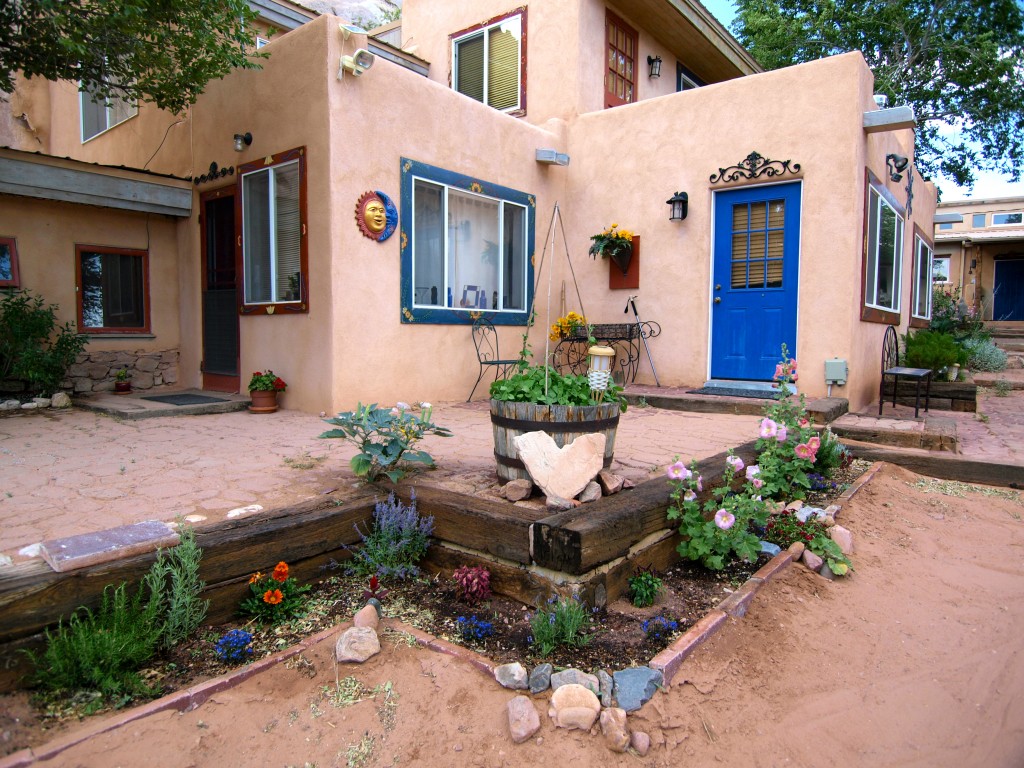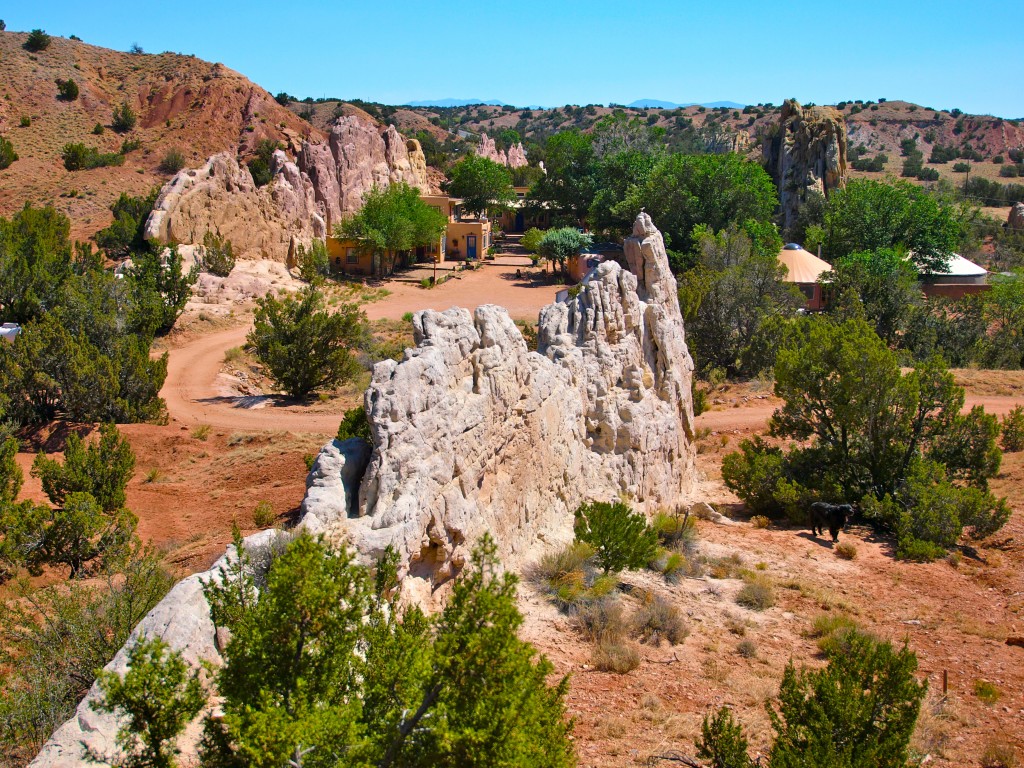When I first moved to New Mexico from the east coast I asked somebody how to tell the difference between a juniper and a piñon pine. Easy, they said: most of the junipers are alive and the piñons are all dead.
Across the Southwest, piñon pines have been dying off over the past twenty years due to a long drought cycle that has left the plants water-stressed and vulnerable to insects. Under such prolonged dry conditions, the trees cannot make enough sap to defend themselves against the piñon bark beetle and ecologists estimate between 40 and 90 percent of piñons have died, leaving behind a lot of flammable deadwood.
This year has been exceptionally dry. Since January we’ve gotten about an inch of rain and everything here is crackling – the grass, the trees, the rattlesnakes, and the two big forest fires burning near Santa Fe and Los Alamos.
I live in Cerrillos, about 20 minutes south of Santa Fe, at a place called Garden of the Gods, where I exchange landscaping for free lodging in a refurbished Airstream. The name Garden of the Gods is not hyperbole. This place is a geologic wonder. Massive 40-foot high fins of Dakota Sandstone cut through the property, trending north-south. These thick slabs of white, yellow and pink rock were formed long ago, before the dinosaurs roamed, when this region of the world was covered by an inland shallow sea. Around 27 million years ago, during the uplifting of the Sangre de Cristo mountain range, these layers were broken apart into slabs and stood vertically.
The fins in my big backyard are just one exposed section of what’s known as the Dakota Wall formation, which runs along the eastern roots of the Rockies and remerges at the spectacular Garden of the Gods in Colorado Springs and again, further north, at the Flatirons near Boulder. Less than a mile south of here, the Dakota Wall cuts through the water table of the Galisteo River basin. Flowing underground along the rocks, water naturally pools in the aquifer beneath the Garden of the Gods, making this place an oasis.
Part of my duties here as the caretaker is to weed and water the gardens. It’s a great job and in many ways I thoroughly enjoy it. Watering in the evenings after a day of intense dry heat is thoroughly refreshing. In such an arid place, the sight, smell and sound of flowing water are delightful.
Beyond the garden walls, however, the desert is a tinderbox. The piñons are deadwood and the junipers and cacti are struggling and everything is covered in dust. The animals too are desperate; almost everyday I see coyotes, looking lean, very close to the house, lured in by the scent of water, rats and rabbits. The other evening, over the hiss of the hose, I heard an ominous rattling. A largish diamondback was coiled in the damp mulch.
Some evenings, while watering, I smell smoke drifting in from the Wallow Fire burning in eastern Arizona, about 200 miles to the southwest, currently the largest wildfire in Arizona history. The smoke from the nearby Pacheco and Las Conchas fires above Santa Fe and near Los Alamos is streaming away from here, but if I climb to the top of my backyard rocks, I can see two mushrooming plumes of thick white smoke rising from the Sangre de Cristos to the north and the Jemez mountains to the west.
 The smell of smoke lends an acrid edge to this dryness and I can’t help but worry about water. My landlord assures me there’s plenty here. She says her well has never gone dry. She has lived here 25 years and remembers when a waterfall flowed year-round from the now bone dry crack that splits one of the backyard rocks. She says that I should spend about an hour watering the garden every evening.
The smell of smoke lends an acrid edge to this dryness and I can’t help but worry about water. My landlord assures me there’s plenty here. She says her well has never gone dry. She has lived here 25 years and remembers when a waterfall flowed year-round from the now bone dry crack that splits one of the backyard rocks. She says that I should spend about an hour watering the garden every evening.
My hose runs a gallon and a half a minute so in an hour’s worth of watering I will spill 90 gallons. In the grand scheme of American water use, that isn’t a lot. In Santa Fe, the average home uses 350 gallons a day. But standing in the garden, hose in hand, feeling the cool spray on my bare legs, looking out on the hot desert, where the piñons are dead and the coyotes are desperate, it’s too much. The Southwest is burning and I am watering hollyhocks.
_______________
Mary Caperton Morton is a freelance writer, photographer and professional housesitter currently living in Cerrillos, New Mexico. When she’s not at the keyboard she can usually be found outside — hiking, climbing mountains and taking photographs. Follow her travels at The Blonde Coyote.
Credits: Mary Caperton Morton

One thought on “Guest Post: Drought in the Garden of the Gods”
Comments are closed.